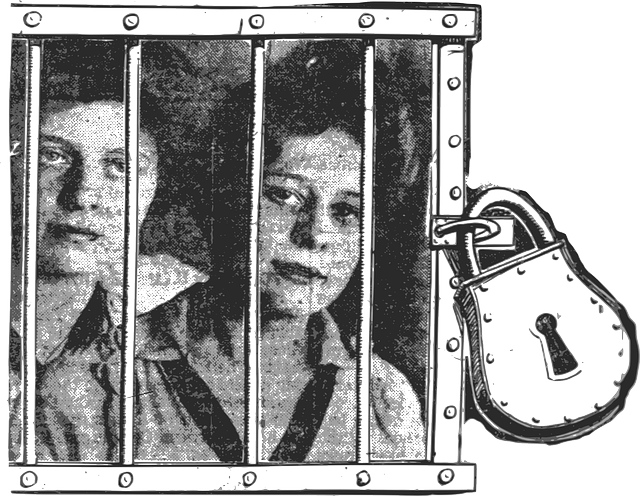Teen rehabilitation programs integrate community service as punishment to address substance abuse, behavioral issues, and mental health challenges. This innovative approach teaches responsibility, empathy, hard work, and accountability through activities like park clean-ups, food bank assistance, or mentoring. Effective community service programs foster personal growth, empathy, and community connections, ultimately facilitating successful reintegration into society. Mentorship and ongoing counseling further support teens in building self-esteem, setting realistic goals, and maintaining accountability post-rehabilitation.
“Teen Rehabilitation Back on Track” explores transformative strategies for at-risk youth. By focusing on understanding teen rehab and its goals, we uncover innovative approaches like community service as an effective punishment. This article delves into designing impactful community service programs tailored to teens’ needs, while also highlighting supportive measures to ensure sustained positive change post-rehab. Discover how these methods guide teens back onto a path of success and personal growth. “Community Service as Punishment” becomes a powerful tool in this journey towards redemption and rehabilitation.
- Understanding Teen Rehabilitation and Its Goals
- Community Service as an Effective Punishment for Teens
- Designing a Successful Community Service Program
- Supportive Measures to Help Teens Stay on Track Post-Rehabilitation
Understanding Teen Rehabilitation and Its Goals

Teen rehabilitation is a specialized program designed to help adolescents who have struggled with issues like substance abuse, behavioral problems, or mental health challenges. Its primary goal is to guide young individuals back onto a positive path by addressing the root causes of their behavior and providing them with the tools for long-term success. This process often involves therapy, education, skill development, and community involvement.
One effective approach within teen rehabilitation is the utilization of community service as punishment. Instead of traditional punitive measures, adolescents are encouraged to perform community service hours as a form of redemption. This not only helps them give back to their communities but also fosters a sense of responsibility and empathy. By engaging in meaningful activities, teens learn valuable lessons about hard work, accountability, and the positive impact they can have on others—goals that are crucial for their overall rehabilitation and reintegration into society.
Community Service as an Effective Punishment for Teens

Community service can be a powerful tool in teen rehabilitation, offering an alternative approach to traditional punishments like detention or suspension. By engaging in community service as a form of discipline, teenagers learn the value of giving back and taking responsibility for their actions. This experience allows them to develop a sense of empathy and understanding towards those less fortunate, fostering personal growth and a stronger connection to their community.
When teens participate in community service projects, they gain practical life skills and a new perspective. Whether it’s cleaning up local parks, assisting at food banks, or mentoring younger children, these activities teach them the importance of contribution and the positive impact they can have on society. Moreover, community service provides an opportunity for teenagers to rebuild their reputation and demonstrate their commitment to making amends for any misbehavior.
Designing a Successful Community Service Program

Designing an effective community service program is a key component in teen rehabilitation, offering an alternative to traditional punishments. This approach leverages community engagement and responsibility to foster personal growth and restore hope. When structured well, community service can be transformative, teaching teens valuable life skills, promoting empathy, and building connections within the community.
The success of such programs lies in tailoring activities to individual needs and interests while ensuring they align with the goals of rehabilitation. Engaging teens in meaningful projects, like urban beautification initiatives or assisting local charities, instills a sense of purpose and encourages positive behavior changes. Additionally, involving mentors or volunteers from the community can provide valuable guidance and support, enhancing the overall impact of the program.
Supportive Measures to Help Teens Stay on Track Post-Rehabilitation

After completing a rehabilitation program, teens face the challenging task of reintegrating into their communities while staying on the path to recovery. Supportive measures play a pivotal role in this transition. One effective strategy is incorporating community service as punishment, where teens contribute to their communities through various service projects. This approach offers multiple benefits; it gives back to the community, teaches valuable lessons about responsibility and empathy, and provides a sense of purpose. Additionally, community service can help teens build social connections, gain new skills, and boost their self-esteem.
Mentorship programs also prove invaluable. Connecting with adults who have successfully navigated similar challenges can offer much-needed guidance and support. These mentors provide encouragement, share insights, and help teens set realistic goals. Furthermore, ongoing counseling sessions and regular check-ins with rehabilitation staff ensure that teens remain accountable and on track. By combining community service, mentorship, and continuous support, we empower teens to thrive and stay on the right path post-rehabilitation.
Teen rehabilitation programs, with a focus on community service as an effective punishment and support system, offer a promising path towards positive youth development. By designing structured community service programs tailored to teens’ needs and providing ongoing support post-rehabilitation, we can empower young individuals to stay on track and make meaningful contributions to their communities. This holistic approach ensures that teens learn from their mistakes while fostering a sense of responsibility and belonging, ultimately transforming lives and building stronger, more resilient communities.






